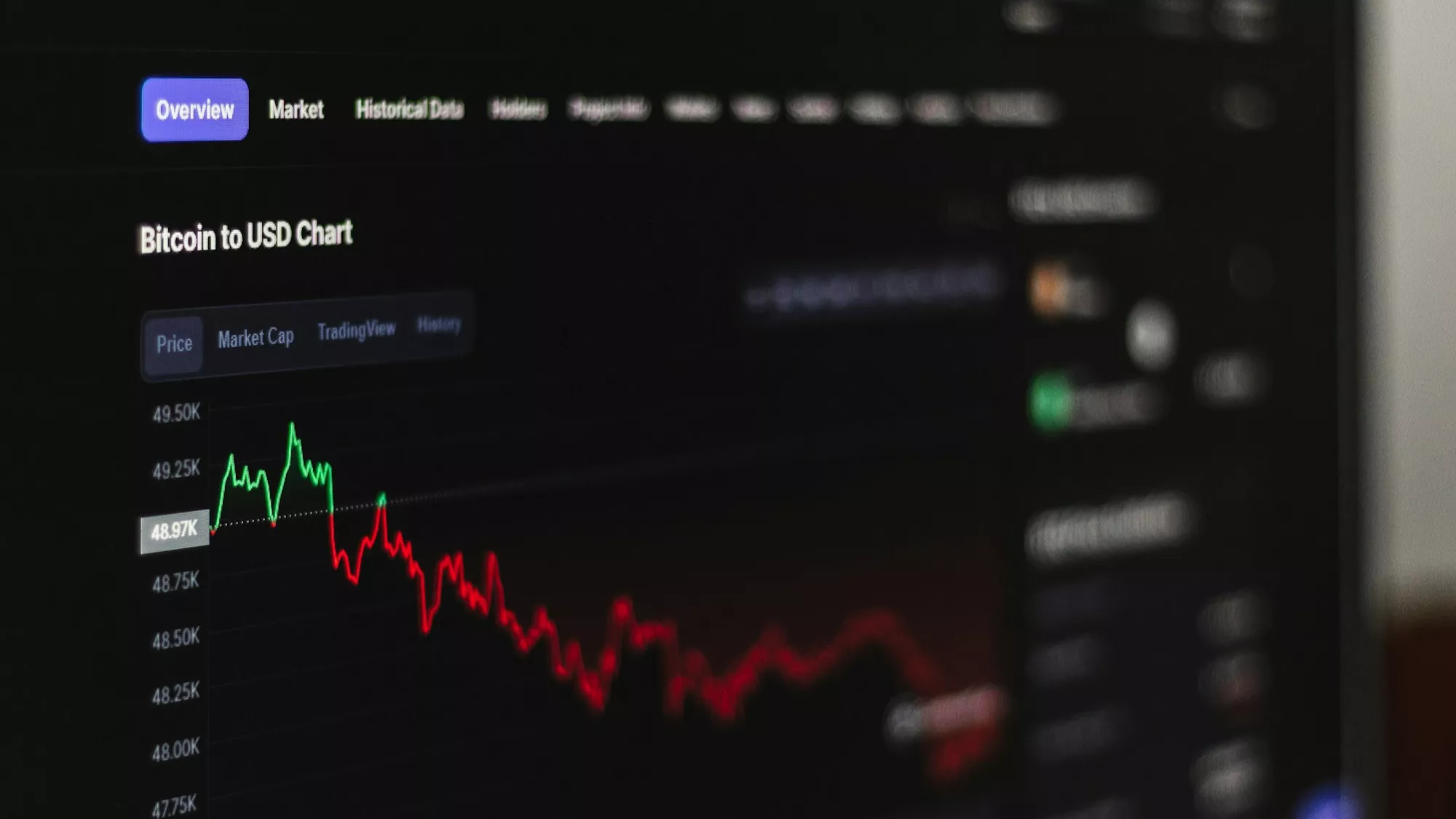What is News Trading in Forex?

News trading in Forex implies making trading decisions based on economic news and events that move the values of currencies. Successful traders with this approach know how markets respond to different news releases; therefore, they can gain profit from price movements.
Therefore, they strategically position themselves to make a kill in profits out of the volatility these events cause in the market. As you would imagine, not all news has the same impact on the forex market. News in this context can be divided into two categories. We have the high-impact news and low-impact news. High-impact news similar to interest rate decisions or employment reports is often the cause of tectonic price movements. In contrast, low-impact news would produce minimal changes in the market, offering less dramatic but meaningful opportunities.
Key Economic Indicators to Watch
Successful news traders keep a close eye on several critical economic indicators, each of which can significantly influence currency values:
- Gross Domestic Product (GDP): Reflects the overall economic health of a country. A strong GDP report often leads to a strengthening of that country's currency as it indicates robust economic performance.
- Non-Farm Payrolls (NFP): This report measures the number of jobs added or lost in the U.S. economy, excluding the farming sector. It's a key indicator of economic strength and is closely watched by traders for its potential to cause market shifts.
- Consumer Price Index (CPI): The CPI measures inflation by tracking changes in the prices of a basket of goods and services. Higher-than-expected inflation might lead to a currency sell-off, as it could signal rising interest rates or economic instability.
- Interest Rate Decisions: Central banks, such as the Federal Reserve or the European Central Bank, periodically adjust interest rates based on economic conditions. Changes in interest rates can have a significant impact on currency values, as higher rates generally attract foreign capital and strengthen a currency.
By focusing on these indicators, news traders can better anticipate market movements and make informed trading decisions. - Non-Farm Payrolls (NFP): This report measures the number of jobs added or lost in the U.S. economy, excluding the farming sector. It's a key indicator of economic strength and is closely watched by traders for its potential to cause market shifts.
- Consumer Price Index (CPI): The CPI measures inflation by tracking changes in the prices of a basket of goods and services. Higher-than-expected inflation might lead to a currency sell-off, as it could signal rising interest rates or economic instability.
- Interest Rate Decisions: Central banks, such as the Federal Reserve or the European Central Bank, periodically adjust interest rates based on economic conditions. Changes in interest rates can have a significant impact on currency values, as higher rates generally attract foreign capital and strengthen a currency.
Developing Your News Trading Strategy
As a trader, a sound news trading strategy is the secret behind your success. More so, a well-developed strategy should help you to make informed decisions, manage your risks effectively, and capitalize on market movements triggered by news events. Let's look at the key components of a working comprehensive news trading strategy:
Fundamental Analysis
Fundamental analysis forms the backbone of news trading. It involves studying economic, financial, and geopolitical factors that influence currency values. By understanding a country's broader economic outlook, you'll be better positioned to make well-informed predictions about how news events might impact a specific market.
Here are the key aspects of fundamental analysis in news trading include:
- Economic Indicators: Familiarize yourself with key economic indicators such as GDP, inflation rates, employment figures, and trade balances. Understand how these metrics impact currency values.
- Central Bank Policies: Monitor central bank decisions and statements. Interest rate changes, quantitative easing programs, and forward guidance can significantly affect currency prices.
- Political Landscape: Stay informed about political events, elections, and policy changes that could impact a country's economic outlook and, consequently, its currency value.
- Global Events: Keep track of major global events like trade agreements, geopolitical tensions, or natural disasters that could affect multiple economies and currencies.
- Market Expectations: Understand market consensus for upcoming economic releases. The actual impact of news often depends on how it compares to expectations.
- Central Bank Policies: Monitor central bank decisions and statements. Interest rate changes, quantitative easing programs, and forward guidance can significantly affect currency prices.
- Political Landscape: Stay informed about political events, elections, and policy changes that could impact a country's economic outlook and, consequently, its currency value.
- Global Events: Keep track of major global events like trade agreements, geopolitical tensions, or natural disasters that could affect multiple economies and currencies.
- Market Expectations: Understand market consensus for upcoming economic releases. The actual impact of news often depends on how it compares to expectations.
Technical Analysis
While news trading is largely focused on fundamentals, adding technical analysis can make your approach even better. Technical analysis identifies significant price levels, trends, and points of entry or exit.
Here's how to incorporate technical analysis into your news trading strategy:
- Support and Resistance Levels: Identify key support and resistance levels before a news release. These levels can act as potential targets or stop-loss points.
- Chart Patterns: Recognize chart patterns that might indicate how the market could react to news. For example, a currency pair in a strong uptrend might be more likely to react positively to good news.
- Indicators: Use technical indicators like moving averages, RSI, or Bollinger Bands to gauge market momentum and potential overbought or oversold conditions.
- Time Frames: Analyze multiple time frames to get a comprehensive view of the market. Short-term charts can help with precise entry timing, while longer-term charts provide context.
- Volume Analysis: Pay attention to trading volume, especially around news releases. High volume can confirm the strength of a move.
- Chart Patterns: Recognize chart patterns that might indicate how the market could react to news. For example, a currency pair in a strong uptrend might be more likely to react positively to good news.
- Indicators: Use technical indicators like moving averages, RSI, or Bollinger Bands to gauge market momentum and potential overbought or oversold conditions.
- Time Frames: Analyze multiple time frames to get a comprehensive view of the market. Short-term charts can help with precise entry timing, while longer-term charts provide context.
- Volume Analysis: Pay attention to trading volume, especially around news releases. High volume can confirm the strength of a move.
Risk Management
Every disciplined trader should have an effective risk management strategy. It is absolutely crucial when it comes to news trading. Here are some of the most effective strategies you can use:
- Position Sizing: Never risk more than a small percentage (typically 1-2%) of your trading capital on a single trade. This helps protect your account from significant losses if a trade goes against you.
- Stop-Loss Orders: Always use stop-loss orders to limit potential losses. Place stops at levels that give the trade room to breathe but also protect your capital.
- Take-Profit Orders: Set realistic profit targets based on potential support/resistance levels or historical price movements following similar news events.
- Risk-Reward Ratio: Aim for a favorable risk-reward ratio, typically at least 1:2 or 1:3. This means your potential profit should be at least twice your potential loss.
- Correlation Awareness: Be mindful of correlations between currency pairs. Avoid taking on too much risk by trading multiple highly correlated pairs in the same direction.
- Stop-Loss Orders: Always use stop-loss orders to limit potential losses. Place stops at levels that give the trade room to breathe but also protect your capital.
- Take-Profit Orders: Set realistic profit targets based on potential support/resistance levels or historical price movements following similar news events.
- Risk-Reward Ratio: Aim for a favorable risk-reward ratio, typically at least 1:2 or 1:3. This means your potential profit should be at least twice your potential loss.
- Correlation Awareness: Be mindful of correlations between currency pairs. Avoid taking on too much risk by trading multiple highly correlated pairs in the same direction.
Essential Tools for News Traders
To stay ahead in the fast-paced world of news trading, you'll need to equip yourself with the right tools. Here are three essential tools every news trader should have in their arsenal:
1. Economic Calendars
Economic calendars are the cornerstone of any news trading strategy. They provide schedules of upcoming economic events and their expected impact on the market.

Here are the key features of economic calendars:
- Event listings: Detailed schedules of economic releases, central bank announcements, and other market-moving events.
- Impact indicators: Most calendars use a color-coded or numerical system to indicate the potential impact of each event (low, medium, high).
- Previous results: Historical data from past releases for comparison.
- Forecasts: Consensus expectations for upcoming data releases.
- Actual results: Real-time updates with the latest figures as soon as they're released.
Popular economic calendars: - Impact indicators: Most calendars use a color-coded or numerical system to indicate the potential impact of each event (low, medium, high).
- Previous results: Historical data from past releases for comparison.
- Forecasts: Consensus expectations for upcoming data releases.
- Actual results: Real-time updates with the latest figures as soon as they're released.
- ForexFactory Economic Calendar
- Investing.com Economic Calendar
- FXStreet Economic Calendar
To use economic calendars effectively, start by planning your trading week in advance by identifying high-impact events. This allows you to prepare your strategy ahead of time. Set alerts for crucial events to ensure you don't miss any potentially market-moving news. - Investing.com Economic Calendar
- FXStreet Economic Calendar
2. Real-Time News Feed
Quick access to breaking news is crucial for making timely decisions in news trading. Real-time news feeds provide instant updates on market-moving events.

Here are the key features of real-time news feeds:
- Instant updates: News delivered with minimal delay.
- Forex focus: Emphasis on currency market news and global economic events.
- Customizable alerts: Notifications for specific keywords or events.
- Multi-source aggregation: News compiled from various reputable sources.
- Market analysis: Expert commentary and potential market impact assessments.
And this is how to use real-time news feeds effectively: - Forex focus: Emphasis on currency market news and global economic events.
- Customizable alerts: Notifications for specific keywords or events.
- Multi-source aggregation: News compiled from various reputable sources.
- Market analysis: Expert commentary and potential market impact assessments.
- Set up customized alerts for currencies you trade.
- Focus on headlines first, then dig into details if necessary.
- Cross-reference breaking news with your economic calendar.
- Be prepared to act quickly on unexpected news.
Finally, check out popular real-time news feed services: - Focus on headlines first, then dig into details if necessary.
- Cross-reference breaking news with your economic calendar.
- Be prepared to act quickly on unexpected news.
- Bloomberg Terminal (premium service)
- Reuters FX Buzz
- Dow Jones FX Trader
- RanSquawk (audio news service)
- Reuters FX Buzz
- Dow Jones FX Trader
- RanSquawk (audio news service)
3. Forex Analysis Platforms
Forex analysis platforms help you interpret news events and their potential market impact. They often combine various tools and features for comprehensive market analysis.

These are the key features of forex analysis platforms:
- Technical analysis tools: Charts, indicators, and drawing tools.
- Fundamental data integration: Economic indicators and financial data.
- News integration: Real-time news feeds and economic calendars.
- Sentiment analysis: Insight into market positioning and trader sentiment.
- Backtesting capabilities: Test strategies using historical data.
And these are some popular forex analysis platforms: - Fundamental data integration: Economic indicators and financial data.
- News integration: Real-time news feeds and economic calendars.
- Sentiment analysis: Insight into market positioning and trader sentiment.
- Backtesting capabilities: Test strategies using historical data.
- TradingView
- MetaTrader 4/5
- DailyFX PLUS
- Autochartist
Finally, here are some pro tips for using these tools: - MetaTrader 4/5
- DailyFX PLUS
- Autochartist
- Integration is key: Look for tools that work well together or platforms that combine multiple features.
- Practice makes perfect: Spend time learning how to use each tool effectively.
- Stay adaptable: Be ready to switch between tools quickly as market conditions change.
- Don't over-rely on technology: Use these tools to inform your decisions, not make them for you.
- Keep learning: Stay updated on new features and tools as they become available.
Remember, while these tools are essential, they're most effective when used as part of a well-rounded trading strategy. Always combine them with solid risk management practices. - Practice makes perfect: Spend time learning how to use each tool effectively.
- Stay adaptable: Be ready to switch between tools quickly as market conditions change.
- Don't over-rely on technology: Use these tools to inform your decisions, not make them for you.
- Keep learning: Stay updated on new features and tools as they become available.
The Pros and Cons of News Trading
News trading in the forex market is a strategy that attracts many traders with its potential for quick profits and exciting environment. However, like any trading approach, it comes with its own set of advantages and challenges. Understanding these pros and cons is crucial for anyone considering this strategy. Let's explore the key benefits and drawbacks of news trading to help you make an informed decision.
Pros:
- News trading can generate significant profits in a short time, especially during high-impact news events that cause rapid market movements.
- The fast-paced nature of news trading makes it exciting and engaging, attracting traders who thrive in a dynamic environment.
- Traders can apply and refine their fundamental analysis skills, making informed decisions based on economic data and news.
Cons: - The fast-paced nature of news trading makes it exciting and engaging, attracting traders who thrive in a dynamic environment.
- Traders can apply and refine their fundamental analysis skills, making informed decisions based on economic data and news.
- The volatility associated with news events can lead to substantial losses if not managed properly, making it a high-risk strategy.
- Success in news trading often depends on the ability to make rapid decisions, which can be challenging and stressful.
- Monitoring news and reacting quickly can be exhausting, requiring constant attention and a high tolerance for stress.
Remember, successful news trading requires a combination of knowledge, skill, discipline, and the right temperament. It's important to honestly assess whether this high-energy, potentially high-reward (but also high-risk) style of trading aligns with your personality and trading goals. By staying informed, developing a solid strategy, and managing your risks effectively, you can leverage news events to potentially boost your trading profits. - Success in news trading often depends on the ability to make rapid decisions, which can be challenging and stressful.
- Monitoring news and reacting quickly can be exhausting, requiring constant attention and a high tolerance for stress.
